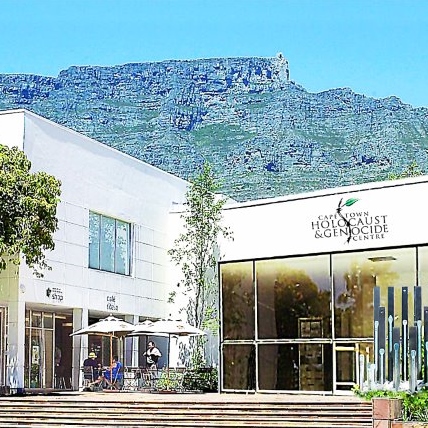
SA

Name change embodies a truer understanding
MICHAL SINGER
The recent opening of the Johannesburg Holocaust & Genocide Centre, under director Tali Nates, has provided impetus for the shift. In practice, other genocides, particularly in Africa, have always featured as a subject for discussion and commemoration.
The Cape Town centre has been intimately involved in annual Rwandan genocide commemoration ceremonies. As early as 2001, it co-hosted a three-day conference with the Institute for Justice and Reconciliation on Genocide and the Rwandan Experience: A South African-Rwandan Dialogue.
By 2007, teacher training conferences included a component on Post-Holocaust Genocides and in 2011, the centre hosted an event to honour survivors of both the Holocaust and Rwandan genocides.
It has become tradition for the centre to support the annual commemoration of the Rwandan genocide and for Rwandan community representatives to light a candle in memory of the 1994 genocide at the annual International Holocaust Remembrance Day.
Upon the opening of the Cape Town Holocaust Centre in August 1999, Nelson Mandela wrote: “In the same way that the recollection of apartheid’s inhumanities is helping to heal and reconcile the South African people, so the memory of the Holocaust will strengthen the foundations upon which we are building a nation dedicated to ensuring that never again shall our land see such wrongs by one against another.”
Weighty, universal questions are faced by all visitors to the museum. Recent travelling exhibitions have included topics ranging from survivor stories to how Germany has confronted its dark past and the human cost of atomic warfare in Hiroshima.
The CTHGC exhibition moves beyond the now-classic adage of Holocaust remembrance ‘Never Again’ – because it happened again..
‘Genocide: a crime without a name,’ is the focus of a new installation. . It comprises memorials of Jews whose lives and communities were destroyed in the Shoah, a transnational genocide and of the inhumane treatment of minority groups by the Nazis, including black Germans, Roma and Sinti, and the mentally and physically disabled. The political implications of opposing the regime are also depicted through insight into the fate of dissidents, homosexuals, resisters of the Reich and prisoners-of-war.
The term ‘genocide’ – referring to the state-sanctioned mass murder of a group of people by its own government – was coined only in 1944 by the Jewish-Polish legal mind Raphael Lemkin.
He advocated for the legal recognition of the crime of targeted destruction of groups at the International Military Tribunal in Nuremberg in 1946. However, it was only in late 1951 that it was adopted by the United Nations General Assembly. Defining genocide within a legal framework was an important step , but it took nearly half a century for both national and international jurisprudence to catch up. It took just as long for Holocaust memorialisation to evolve into its current form, relying heavily on artefacts, images and testimony accounts by survivors.
After the war, silence was the first response. Early on, some were even shamed. Sheerith Hapletah, the Hebrew name given to the Jewish Survivors Association, became a steadfast in South Africa, with regional branches catering to the needs of Jewish survivors. Whether survivors felt ashamed, scared or wished to save their families from the trauma of knowing, their children read their silences, and grew up to ask new questions.
In 2017, we are weighed down by the phenomenon of genocide spanning time and place, and we are forced to ask: How can we let this happen again?




